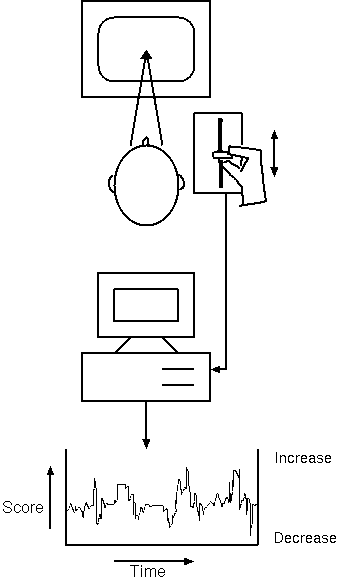
Continuous assessment as a tool for monitoring temporal variations in subjective impressions
H. de Ridder1, R. Hamberg2 and W. IJsselsteijn3
1Department
of Industrial Design, Delft University of Technology, Delft, The Netherlands
2OcÚ Technologies b.v., Venlo, The Netherlands
3IPO Center for User-System Interaction, Eindhoven University of
Technology, Eindhoven, The Netherlands
Present-day technology begins to make it feasible to communicate complex information in a natural, dynamic way. Limitations in transmission bandwidth and memory are important reasons why system designers have to employ high levels of data compression. This often leads to content-dependent, temporal fluctuations in the quality of information presentation. When annoying to the end-user, such fluctuations can seriously threaten the acceptability of new media.
In this paper, continuous assessment is presented as a tool for monitoring temporal variations in subjective impressions. This method was originally developed for measuring time-varying image quality [1,2] and has recently been adopted by the International Telecommunications Union (ITU) under the name SSCQE (Single Stimulus Continuous Quality Evaluation) [3]. By this method, subjects continuously indicate the instantaneously perceived strength of a subjective impression by moving a slider along a graphical scale. As an illustration, Figure 1 shows the experimental setup for continuous assessment in case of evaluating visual information presented on a display. The observer looks at the screen and is asked to continuously adjust the position of a slider along a graphical scale according to his/her perception of a pre-specified attribute, e.g. perceived sharpness, depth or, at a more abstract level, quality or sense of presence. In general, the observer moves the slider upwards when experiencing an increase in perceived strength and downward when experiencing a decrease in perceived strength. The position of the slider is sampled at a fixed rate (e.g. 20 times per second) and the collected data are stored as files. These sampled positions can be plotted as a function of time to provide an impression of the temporal variation in the assessed attribute.
Continuous assessment has been employed to evaluate subjective impressions like time-varying quality of compressed video and speech material [2,4], perceived sharpness of blurred images [1], and perceived depth and feeling of presence in 3DTV [5]. The experimentally established relation between the results of continuous assessment and overall judgments indicate that human observers rely predominantly on the worst events in a sequence when determining their overall judgment [6].

Figure 1. Continuous assessment: experimental setup
Paper presented at Measuring Behavior 2000, 3rd International Conference on Methods and Techniques in Behavioral Research, 15-18 August 2000, Nijmegen, The Netherlands